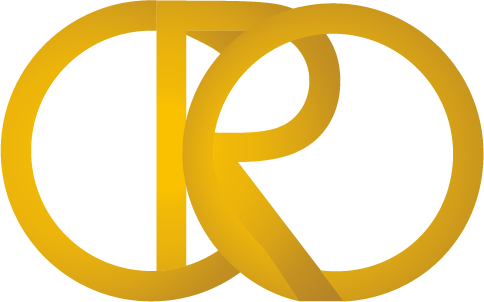
Sales Development: A Cryptic Weapon for Dominating Markets
by Chris Beall
The B2B sales development rep, commonly referred to as an SDR, is generally considered to fulfill two functions for a growing company:
- To create new opportunities, usually in the form of scheduled meetings with the right people in targeted market segments; and
- To serve as a pipeline for future account executives
The SDR role is therefore seen as a way to get something important – discovery meetings – more predictably and at a lower cost than having AEs set their own appointments. And it has a kicker: If all goes wonderfully, it “manufactures” new AEs as a byproduct, which reduces recruiting costs and the risk of hiring a bad AE.
There is, however, another way of looking at SDRs: as shock troops for swiftly exploring a hypothetical market segment without distracting the sales team that is driving new customer acquisition and revenue growth in an existing segment. In this role, an SDR team is transformed from being a cheap way of getting more of whatever you live on today into a mission critical mechanism for turning a market hypothesis into a “Go/No Go” decision based on facts, not feelings.
Your Fastest and Most Objective Way to Discovery
In the market dominance context, an SDR team can be your fastest and most objective way to find out if there is a “there” there. If they can set appointments in the hypothetical market segment above a threshold rate, you can confidently go after that segment, knowing that you will have a big enough flow of discovery meetings to support market dominance. If they cannot, you can shut down that specific market segment hypothesis and point them at another.
But is it really practical to use a team that is usually more junior than your seasoned AEs to evaluate a new potential market? Isn’t their lack of experience going to make it hard to trust the results, potentially making you walk away from a market that could have been lucrative and maybe even strategic?
It’s actually a significant advantage using less experienced, even more naïve, talent to play the SDR role in a market exploration scenario. Why? Because with experience comes bias, and bias reduces objectivity and thereby introduces variation. That is, if an SDR doesn’t have an opinion about product-market fit in the new target segment, they are free to execute consistently in every conversation. Prospects can hear uncertainty the same way wolves smell fear: instantly and certainly. And when a prospect hears uncertainty, they become more than uncertain: When faced with a tentative seller, the buyer usually heads for the door. Better to have an inexperienced SDR who naively believes in the value of their offering than a grizzled veteran who “knows” that “these dogs won’t eat this dog food.” The former executes cleanly without knowing what the right answer is, while the latter knows the answer already – so why use them to ask the question?
How to Use SDRs to Dominate Your Market
Here are the things you MUST do when using SDRs to explore a market segment with intent to dominate:
- Make their calling lists for them. The market hypothesis belongs to the company, not the SDRs. Delegating list creation would be the same as delegating go-to-market strategy.
- Use a simple script that has been tuned for a “most likely” value proposition for your offering. This framework has proven effective because it is based on universal psychological principles, not the peculiarities of your product or industry.
- Choose two SDRs who are known to execute the script with great consistency and sincerity. Teach it to them and have them practice it with each other, face to face, with at least 30 repetitions.
- Teach these SDRs about the value the prospect will certainly get if they attend a discovery meeting for your new offering. Make sure these SDRs are true believers in the potential value of the meeting they are offering for the human being they are speaking with, even if those humans never end up doing business with your company.
- Enable your two market explorers to have live ambush conversations with people on their list. The ideal number is about 30 per day. Have a coach listen to each conversation and help your market explorers keep their emotional balance and tonality. Voice matters as much or more than the script itself!
- Repeat step 5 until your market-exploring SDRs have had more conversations than the square root of your hypothetical market segment size. (Sorry about that math, but that’s why some nice person put a calculator on your smartphone.)
- Evaluate the results. If your team converted conversations to discovery meetings at a 5% or greater pace, congratulations! You have validated your market hypothesis. Add enough SDRs to generate a flow rate of scheduled discovery meetings sufficient to cover 60% of your target market over the next 12 quarters. Conservatively, use a 5% conversion rate for this calculation. The process will get more efficient over time as your team has relatively fewer ambush (first) conversation and relatively more follow-up (second, third, and beyond) conversations – but a little overprovisioning in the early days will keep you from falling behind.
Of course, you need to actually hold those discovery meetings and close some of them into new customers. But that’s just sales. And without sales we have no hope of achieving market dominance.
The magic of this approach is that the same resource base – your SDR team – can be used repeatedly to both explore new markets and to scale within those markets. This lets you execute new market explorations without disrupting current market exploitations, which is key to achieving business balance over time by using the gross profit flow from your dominated markets to fund exploration of new markets.
In summary, the modern SDR may have evolved to make sales more efficient and predictable. But combined with sufficient technological firepower to have 30 or more conversations per day (think ConnectAndSell), they can do something far more powerful: explore new markets quickly and surely, and then scale efficiently when you strike gold. Use them correctly, and you can have as much market dominance as you like.
Tags: Chris Beall
